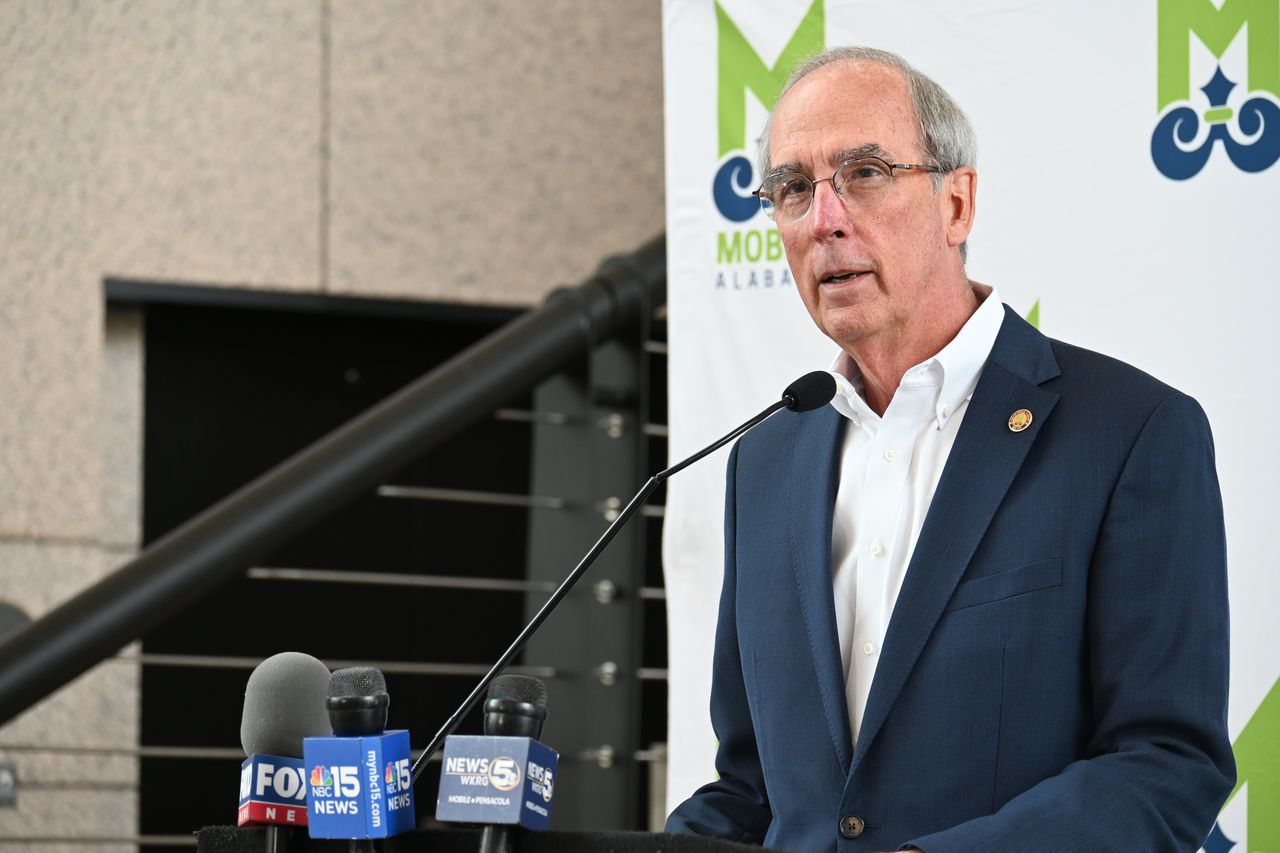Mobile County Democrats oppose city’s annexation plans and process
A recently redrawn Mobile City Council map with a majority Black council districts “will never be realized” under proposed annexation ideas city officials are weighing, the Mobile County Democratic executive committee said Thursday.
The political party’s leadership announced their opposition to the “proposal and process” of the current annexation plan via a five-paragraph news release.
Related:
The concerns focused mainly on the dilution of the Black voting age population if annexation of a mostly white areas of west Mobile is annexed into the city limits and resurrects a concern during the annexation debate of 2019 that ultimately led in the defeat of a proposal to add 13,000 residents from west of Mobile into the city.
The city introduced in January several proposed maps aimed at boosting Mobile’s population above 200,000 residents, and making it the second-largest city in Alabama trailing only Huntsville.
“The committee has grave concerns over the undermining of fair representation for all of Mobile’s citizens,” the news release reads. “The committee is mindful of the historic use of discriminatory redistricting and annexations to undermine the political power of Black communities of Alabama.”
The news release noted the lengthy redistricting process, which ended last year with a fourth majority-minority district on the seven-member council, “has not even been in place a year and there is already an effort to take it away.”
Mobile City Councilman William Carroll, who led much of the scrutiny on the redistricting plans and argued in support of majority-minority districts based on the voting age population, said he had not seen the committee’s news release, but said that “every concern will be listened to and heard and measured” before the council votes on annexation.
“I appreciate the concerns of every who is watching and following annexation closely,” Carroll said. “As I have said before, I have been an annexation proponent in the past in the (Sam) Jones administration. What we do now has a heavy weight on the economic prosperity in the city in the next 20 to 30 years.”
The council adopted its new redistricting map on August 9, 2022. The map outlines the boundaries of the seven council districts for the next 10 years. The vote followed seven months of contentious debate, and end with a “historic” 6-0 vote creating, for the first time, a council map with a majority Black districts. The council’s current racial makeup is three white members, and three who are Black. The council’s fourth member, Scott Jones, resigned about two weeks ago. His council district’s demographics is overwhelmingly white.
Mobile’s new council map will not take effect until the 2025 city elections. Under the new map, the district in the northwest area of Mobile that is currently represented by Gina Gregory, who is white, will consist of a voting age population that is 53.2% Black, 41.2% white. It’s a considerable shift from its previous 48% white-45% Black voting age population split that was established after the 2010 Census.
It’s unclear what the district’s racial makeup will look like if annexation is approved. The council is in charge with determining whether a special election should be held to decide if annexation should be allowed. Voters, ultimately, decide the fate of an annexation proposal during a special election.
The city is pitching four different annexation proposals and is looking to grow the city from anywhere between 16,738 residents to 25,806 residents.
In each of the city’s four proposed annexation scenarios provided by the city, demographic information shows the city maintaining its majority-Black status, but it’s voting age population barely maintaining a Black majority. If the city’s largest annexation plan is adopted, Mobile’s voting age population would be a razor-thin 46.8% Black and 46.7% white.
Mobile city officials who support annexation say the city stands to gain a net $7.1 million to $8.4 million in sales tax revenue from the annexed territories, depending on which territories are annexed. Those numbers climb a decade after annexation, with a projected $11 million to $13 million coming back to city coffers.
